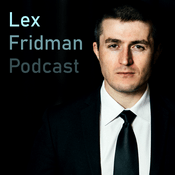60 episodes

59. Why Fusion, SMRs, and CCS Won’t Save Us (and other Seven Sins of the Energy Transition)
08/10/2025 | 29 mins.
In this episode, Gerard Reid, Laurent Segalen and Michael Barnard dug into the technologies and narratives that keep surfacing in discussions about the energy transition, but which continue to underdeliver when you scrutinize the economics and engineering realities.Carbon capture and direct air capture remain heavily subsidy-driven, often costing more to operate than the value of the CO₂ they sequester. The dilution of carbon in the atmosphere makes the whole proposition profoundly inefficient, and while there are niche opportunities where high-purity CO₂ streams are adjacent to storage infrastructure, those remain exceptions. Enhanced oil recovery is the only space where the numbers truly add up, which means the public ends up footing the bill for most other applications. Even regulatory pushes, such as Germany’s, can’t overcome the fundamental cost and scalability barriers. Hydrogen suffers from a parallel set of problems. The sector’s viability as a broad energy carrier depends on hitting a production cost of around $1 per kilogram, but real-world projects are stuck closer to $8 per kilogram. That gap has led to a string of cancellations from heavy hitters like BP, Exxon, and Air Products. Despite the hype around green hydrogen, the underlying assumptions never matched the physics or the economics. Battery electrification has emerged as the far more effective pathway for most transport, leaving hydrogen to fight for narrow industrial niches while its infrastructure and fuel cell supply chains lag behind.Nuclear energy is facing its own reckoning. The pivot toward small modular reactors was meant to revive the industry with faster, cheaper, more scalable deployment, but the reality looks different. Project sizes have crept upward, wiping out the “modular” advantage, and costs are trending well above $200 per megawatt-hour—hardly competitive. Ontario’s flagship SMR project is already slipping years past its promised delivery, and there’s little to suggest Wright’s Law cost declines will appear in a sector defined by bespoke builds and long lead times. Investors may find opportunities in the extended development cycles, but the contribution to near-term decarbonization remains negligible.Fusion is another seductive technology that continues to consume enormous sums of capital without altering the climate trajectory. ITER alone is 30 years behind schedule and twenty times over budget, aiming only for a five-minute sustained reaction by 2040—without generating electricity. Private startups are raising capital but remain decades away from surmounting fundamental engineering barriers. I’ve said before that fusion may eventually matter for space exploration, but it’s irrelevant for terrestrial energy in this century. Still, as a scientific project, it’s worth continuing—but policymakers must not confuse it with a climate solution.Biofuels offer a more mixed picture. First-generation projects like corn ethanol were both environmentally and economically flawed, but second- and third-generation fuels derived from waste streams are showing promise. These have a real role to play in hard-to-electrify domains like aviation and maritime shipping. However, they’re not a replacement for direct electrification on the ground. European policy still reflects caution due to food-versus-fuel concerns, but as technologies improve, biofuels can carve out a targeted and pragmatic role.We also touched on the politics and market dynamics of offshore wind and ESG. Offshore wind in the U.S. continues to face transmission bottlenecks, fragmented policy, and outright political hostility, leading to cancelled and delayed projects. Meanwhile, Europe’s integrated approach in the North Sea demonstrates what’s possible with coordinated policy. On ESG, we acknowledged the criticisms around greenwashing and governance metrics that often make little sense. Yet, even through the noise, investment flows tell a real story: fossil fuel funding is down 25%, and corporate decarbonization continues, even if much of it is “green hushed.” Governance frameworks are evolving, with multi-stakeholder models like B Corps pointing toward a fundamental redefinition of fiduciary responsibility.Taken together, these discussions reinforce a central theme: the energy transition isn’t about wishful thinking or fashionable narratives. It’s about hard economics, engineering constraints, and political realities. Technologies like carbon capture, hydrogen, SMRs, and fusion may attract attention and capital, but their roles are narrow at best and distractions at worst. The real work is in scaling what actually delivers—electrification, renewables, smarter grids, and targeted complementary solutions like advanced biofuels.

58. Deepwater Minerals, Shallow Promises (2/2)
24/09/2025 | 1h 7 mins.
In the second episode of Redefining Energy Tech, Lyle Trytten (aka the Nickel Nerd) joins host Michael Barnard to explore the controversial world of seabed mining. The discussion focuses on The Metals Company (TMC), Impossible Metals, and their efforts in the Clarion Clipperton Zone.A significant milestone was recently announced: for the first time, a pre-feasibility study claimed 50 million tons of declared reserves out of 360 million tons of identified seabed resources. While notable, the credibility of this claim is in question. Unlike Canadian and Australian standards that require independent certification, TMC’s study relied on internal sources—raising concerns about transparency and trustworthiness.Mining has always carried uncertainty, and seabed operations are even riskier. Most mining projects miss their cost, scope, and timeline estimates—and deep-sea ventures amplify these risks. TMC’s proposed system involves a massive vacuum operating at 4,000 meters below sea level, connected to a 7-kilometer riser pipe hauling nodules to the surface. The technology is approaching mid-to-high readiness. In contrast, Impossible Metals is developing small autonomous vehicles to pick nodules selectively. While innovative, their tech is at a lower readiness level (around 3–4) and still grappling with deep-sea navigation—more science fiction than reality for now.Even if extraction is successful, processing presents a massive challenge. TMC has an agreement with a Japanese smelter for 1 million tons per year, but global demand calls for 9 million tons of new processing capacity. Indonesia, through China-led ventures, dominates the nickel supply chain with tightly integrated mining and smelting. TMC’s proposal to build two U.S. refineries underscores how far behind the West is in infrastructure and planning. History isn't encouraging either—many Western nickel laterite projects have failed, while Chinese efforts succeed due to end-to-end alignment of mining, processing, and market demand.The conversation also revealed deeper systemic issues. The West has allowed mining and metallurgy education to deteriorate. The U.S. now produces a fraction of the engineers it once did, while China graduates the majority of the world’s mining specialists. Reversing that trend could take a generation. Meanwhile, seabed mining risks following the path of hydrogen for transport: overhyped, slow to materialize, and economically weak compared to better alternatives. Consumers are already pushing back on seabed minerals due to environmental and ethical concerns. If deep-sea mining ever becomes viable, China is best positioned to lead. A new global treaty could further hinder seabed mining. The High Seas Treaty—now ratified by over 60 nations and set to become international law in January—prioritizes a precautionary approach to ocean activities and aims to protect nearly a third of international waters. It also includes provisions for sharing profits from marine genetic resources. While the U.S. has signed, it has yet to ratify the agreement. Looking ahead, EV adoption continues to accelerate, but resource strategies must be grounded in reality. Pursuing high-cost, speculative mineral sources powered by clean energy doesn't make sense when direct electrification offers more immediate gains. A strong critical minerals strategy in the West will require renewed investment in education, strategic alliances, and a focus on scaling practical, proven technologies—not just what looks impressive on a slide deck.

57. Deepwater Minerals, Shallow Promises (1/2)
10/09/2025 | 43 mins.
In this episode of Redefining Energy Tech Michael Barnard sat down with Lyle Trytten, who many in the industry know as the nickel nerd. He has spent decades working in mining and mineral processing and has become a trusted voice for organizations like Natural Resources Canada and the International Energy Agency. Our conversation turned to the techno-economic realities of seabed mining, a topic made timely by American executive orders on resource leasing and the ongoing debates around the Clarion Clipperton Zone in the Pacific.Lyle laid out the three categories of undersea mineralization that matter: manganese-rich crusts closer to shore, sulfide deposits around black smokers, and the polymetallic nodules that dominate the abyssal plains. It is those nodules that attract the most attention, given their mix of manganese, nickel, copper, cobalt and iron. The percentages matter here. Manganese makes up 20 to 30% of nodules, feeding a steel market of about 20 million tons annually. Copper mirrors manganese in demand at similar volumes. Nickel sits above copper in value, with nodules carrying over 1% grades. Cobalt is the prize, worth two and a half times nickel and largely controlled today by the Democratic Republic of Congo with annual output of 250,000 to 300,000 tons. Compared to terrestrial deposits, those grades are very competitive, often better than what current copper and nickel mines deliver onshore.Of course, the challenge is not what lies within the nodules but where they are. Four kilometers down is a different game than an open pit in Chile. Lyle framed it with a simple multiplier: one times for onshore, ten times for offshore, a hundred times underwater, and a thousand times when you hit the seabed. The Clarion Clipperton Zone lies thousands of kilometers from shore, making costs and logistics daunting. Even compared to offshore oil, with rigs like Deepwater Horizon working at 1.5 kilometers depth, this is an order of magnitude harder. That reality explains why seabed mining remains more a promise than a practice.We also dug into the credibility problem the sector faces. The history of mining is littered with scams, from Bre-X to pump-and-dump juniors, which is why Canada now requires transparent disclosures under NI 43-101. Without strict governance and independent validation, seabed mining risks repeating those mistakes. The resource base is not the issue. Just as with oil, the minerals are there. The question is whether reserves—economically viable, technically accessible deposits—will come online in time to meet surging demand, especially for copper, which looks tight in the next 15 years.Substitutability plays a role too. Aluminum can stand in for copper in transmission lines. Stainless steel has shifted chemistries in response to nickel price spikes. Battery makers tweak their chemistries—NMC ratios change with market conditions, and lithium iron phosphate has taken half the electric vehicle market without using nickel, manganese, or cobalt at all. Recycling will matter increasingly, but with service lives of decades for stainless and 20 years for batteries, secondary supply will not relieve near-term shortages. Companies like Redwood Materials and Moment Energy are building the bridge to a circular system, but the lag time is real.The conversation left me with a clear takeaway. Seabed mining is not an easy fix. The minerals are there in attractive grades, but the depth, cost, and governance challenges are immense. At the same time, demand for copper, nickel, and cobalt will keep rising, and prices will eventually force new sources to market. The industry has opportunities in recycling, substitution, and responsible development, but the old habits of hype and over-promising will have to be broken if it is to have a role in the critical minerals future.

56. Planning the future of an energy system: case study Netherlands (2/2)
13/08/2025 | 43 mins.
In this second part of the podcast, Michael Barnard pursues his conversation Paul Martin and Emiel van Druten with explores emerging insights into the Netherlands' energy transition, addressing core assumptions around efficiency, hydrogen usage, and electrification.Building efficiency upgrades yield disappointing returns, with gas consumption often rebounding within 2-4 years post-renovation, limiting achievable reductions to about 50%. The recommended solution is a clear shift toward electrification-first strategies, emphasizing cost-effective insulation to properly size heat pumps, a strategy supported by Heat Geeks' methodology and monitored at heatmonitor.org.Tata Steel's ambitious hydrogen-based direct reduction of iron (DRI) plans illustrate the industrial challenge. The strategy begins with natural gas DRI combined with carbon capture by 2025, transitioning fully to green hydrogen by 2040. However, declining global steel demand, driven by China's reduced infrastructure spending and a shift to scrap-based electric arc furnace production, calls into question the economic viability of domestic hydrogen-based steelmaking. A preferred interim solution involves biogenic methane with CCS, progressing eventually to importing green iron pellets for local processing.Contrary to broader industry forecasts, Dutch hydrogen demand may collapse by as much as 80% by 2050, drastically reducing electrolysis capacity requirements from over 30 GW to around 3 GW, reserved primarily for refineries and biorefineries. This scenario eliminates hydrogen from previously expected uses, such as ammonia production, transportation, steelmaking, and electricity backup generation.Methanol emerges surprisingly as a preferred shipping fuel, surpassing ammonia due to safety advantages and ease of biological sourcing. In aviation, hydrotreated vegetable oil (HVO) derived from waste oils becomes the preferred fuel, driven by its simpler conversion process, though competition for limited feedstocks will favor aviation, pushing shipping toward methanol. Electrification projections for short-sea shipping and inland waterways see significant upward revisions, with long-haul shipping partially electrified due to soaring alternative fuel costs.Transportation electrification accelerates, with full truck electrification anticipated by 2035, eliminating earlier expectations for hydrogen trucks. Industry expert Johnny Ninehuis predicts no diesel trucks sold beyond that point, emphasizing battery technology overcoming heavy transport challenges.The chemical industry faces transformation, with methanol production pathways favoring gasification of waste plastics and biomass, particularly for chemical feedstocks and fuel applications. A smaller, cleaner petrochemical sector will remain viable, shifting to low-sulfur crude and significantly cutting hydrogen demand.System-wide rebalancing adjusts electricity demand growth forecasts downward from a previously projected fivefold increase to approximately 3.5 to 4 times current consumption. This adjustment significantly reduces offshore wind expansion targets, eliminating expensive distant and deep-water installations. Nuclear power is also excluded as non-economic, positioning the Netherlands as a future electricity exporter to neighboring markets, notably southern Germany. Direct air capture and synthetic fuel production are considered economically impractical within the Netherlands, and the fertilizer sector is projected to shift towards ammonia imports as local production becomes increasingly uneconomic. Highlighting broader electrification trends, Fortescue’s recent $3 billion investment in electrified mining equipment illustrates a growing momentum towards electrification even in challenging, heavy industrial sectors.

55. Planning the future of an energy system: case study Netherlands (1/2)
30/07/2025 | 39 mins.
Michael Barnard hosts Paul Martin and Emiel van Druten in an insightful podcast episode exploring the Netherlands’ evolving energy transition scenarios, specifically focusing on strategic planning for 2030 and 2050. Emil van Druten, leading the scenario development at Tennet, collaborates closely with Dutch network operators, leveraging his engineering background to advance pragmatic electrification pathways.Central to the discussion is a recent workshop where Canadian experts provided critical economic validation of the proposed high-electrification strategies. This validation helps anchor ambitious scenarios in realistic economic contexts, highlighting where adjustments might enhance feasibility and efficacy. Complementing these strategic insights was a site visit to the Netherlands' largest operating land-based wind farm—200 MW of wind generation complemented by solar and upcoming battery storage. Detailed discussion covered turbine specifications, operational efficiencies, and the integration potential of such multi-technology sites.The historical context provided by Flevoland's infrastructure evolution underscores the Netherlands' capacity for resilience, particularly with regard to the Afsluitdijk closure dam and sophisticated pumping station operations. Strategically scheduling these pumping stations based on fluctuating energy prices has already achieved substantial operational cost savings, with significant further potential identified through increased automation.The conversation also highlighted acute challenges facing industrial sectors historically dependent on Groningen gas, as the scheduled closure of this major gas field threatens competitiveness. Transition urgency grows, prompting industrial sectors, including major refineries, to rethink energy sourcing strategies and economic positioning within European markets.Biomethane emerges as a notable strategic element, with significant domestic capacity aimed at enhancing industrial processes and providing backup power generation. The strategy prioritizes biomethane for industrial feedstock rather than residential use, capitalizing on its benefits for CO2 enrichment in greenhouse agriculture and nutrient cycling back to farmlands. Maintaining existing methane plants is crucial for ensuring generation reliability, particularly during renewable generation shortfalls anticipated in capacity planning for the early 2030s.Emil and Paul also explore the technological merits of aquifer thermal energy storage (ATES), particularly effective for seasonal heat storage and cooling applications in conjunction with greenhouse operations. Geological advantages and deep drilling expertise have made the Netherlands a leader in this technology, complementing the shift toward optimized heat pump solutions for residential heating. They advocate moving decisively toward all-electric heat pumps over hybrid systems, recommending regulatory adaptations to streamline adoption without imposing expensive building fabric upgrades.Finally, the episode outlines critical regulatory and operational actions needed: automating pumping stations for additional energy savings, revising regulations to facilitate practical heat pump adoption in residential sectors, and addressing persistent regulatory delays hindering district heating initiatives. The insights provided offer a comprehensive blueprint for navigating the complexities and opportunities of the Dutch energy transition.
More Technology podcasts
Trending Technology podcasts
About Redefining Energy - TECH
Listen to Redefining Energy - TECH, Search Engine and many other podcasts from around the world with the radio.net app

Get the free radio.net app
- Stations and podcasts to bookmark
- Stream via Wi-Fi or Bluetooth
- Supports Carplay & Android Auto
- Many other app features
Get the free radio.net app
- Stations and podcasts to bookmark
- Stream via Wi-Fi or Bluetooth
- Supports Carplay & Android Auto
- Many other app features


Redefining Energy - TECH
download the app,
start listening.




































